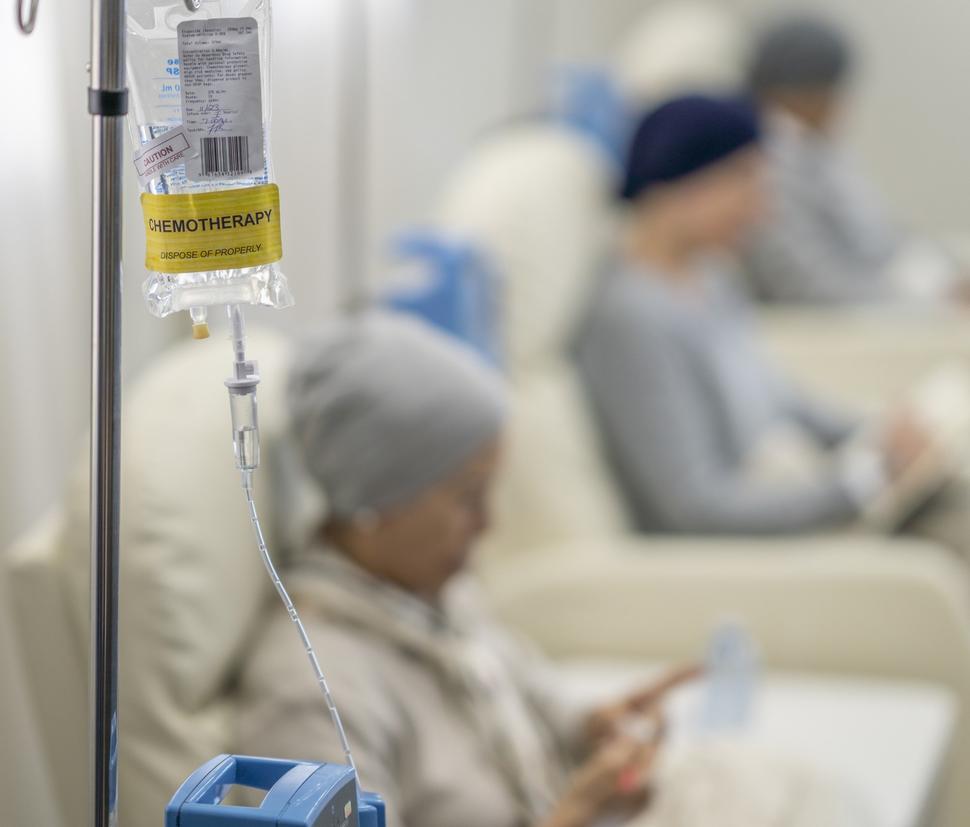Can Chemo Help KRAS Inhibitors Work Better Against Pancreatic Cancer?
, by Sharon Reynolds
A newer class of drugs that target pancreatic cancer may get a helping hand from an old treatment workhorse: chemotherapy. Two new studies in mice show that adding chemotherapy to an experimental KRAS inhibitor called MRTX1133 greatly reduced tumor growth and spread compared with either treatment alone.
This potent effect, both studies found, appears to come about because chemotherapy and KRAS inhibitors each shut down a different set of cellular instructions that can drive cancer cell growth in pancreatic tumors.
Results from both studies were published June 28 in Cancer Discovery.
More than 90% of pancreatic tumors carry a cancer-fueling change in the KRAS gene. Early clinical trials testing drugs targeting a specific change in KRAS, like adagrasib (Krazati) and sotorasib (Lumakras), alone in pancreatic cancer showed promising results. However, these drugs given alone do not work in all patients. And even though tumors shrink in some people, invariably they start growing again, within months after starting treatment.
“We’ve seen several different genetic alterations emerge that cause tumors to become resistant” to KRAS inhibitors, said Andrew Aguirre, M.D., Ph.D., of Dana-Farber Cancer Institute, who led one of the studies. “So, the question comes up: Could you give something in combination that would prevent resistance from emerging?”
Surprisingly, Dr. Aguirre continued, both studies strongly suggest that chemotherapy may be one way to do that.
The chemotherapy regimens used to treat pancreatic cancer significantly shrink tumors in less than a third of patients and can cause serious side effects, so researchers have hoped to replace them with newer, less toxic therapies, explained Christine Alewine, M.D., Ph.D., of NCI’s Center for Cancer Research, who was not involved with the new studies.
Although that may eventually happen, Dr. Alewine said, “for now, it looks like adding on to standard chemotherapy, rather than eliminating it, may turn into our best weapon against pancreatic cancer.”
It's not yet known how much chemotherapy is needed to prevent pancreatic tumors from escaping the effects of KRAS inhibition, Dr. Alewine added. “If we can give lower doses of chemotherapy [with a KRAS inhibitor] than we do now [on its own], we may be able to both improve effectiveness and reduce toxicity,” she said.
Same pancreatic cancer cells, different programs
Within a tumor, cells that look alike can actually function very differently, Dr. Alewine explained. This difference is driven not by differences in their genes, but by how those genes are expressed—that is, what proteins they make and how those proteins behave.
“All of our cells have the same [genetic] instruction program, but only some of those instructions are used in different cell types,” she said.
These instructions cause cells to act differently in response to other cells, infectious agents, or molecules in their surrounding environment—and in response to cancer treatments.
Based on these behavioral patterns, researchers have grouped pancreatic tumor cells into different “states,” including classical, basal, and mesenchymal. Studies have shown that the latter two seem to be very sensitive to KRAS inhibitors, at least initially.
Both research teams set out with the same goal: To better understand what happens to pancreatic cancer cells being treated with KRAS inhibitors, including whether there are changes in their cell state.
How tumors use cell states to escape treatment
For their study, Dr. Aguirre and his team conducted in-depth analyses of circulating tumor DNA in blood samples taken from people with pancreatic cancer before and after treatment with a KRAS-targeted drug. They also tested KRAS inhibitors in different laboratory models of pancreatic cancer.
The team found a wide range of genetic mutations and other changes that potentially contribute to the rapid resistance to these drugs. But they also observed a more global phenomenon. Before treatment, tumors contained a mix of cell states. After KRAS inhibition, classical-state cells came to dominate the tumor.
The other research team, led by Tuomas Tammela, M.D., Ph.D., of Memorial Sloan Kettering Cancer Center, observed a similar phenomenon.
For example, in mice engineered to develop pancreatic tumors in much the same way that pancreatic cancer develops in humans, treatment with a KRAS inhibitor led to a sharp decrease in the number of basal-like cells and their subsequent replacement with classical cells. These classical cells appeared to rely much less on KRAS to survive. That finding, they concluded, identifies these type of pancreatic cells as key culprits in tumor resistance to KRAS-targeted therapies.
“Both of these studies seem to be saying that, while there are some genetic changes that can occur in cells that make up pancreatic tumors, this underlying ability to change their cell state appears to be a main thing driving resistance,” Dr. Alewine said.
Targeting cellular plasticity
But could this escape route by pancreatic cancer cells also be a vulnerability? Classical-state pancreatic cancer cells are known to be more sensitive to treatment with chemotherapy than other cell states.
To investigate, both teams tested the combination of the KRAS inhibitor MRTX1133 plus a standard chemotherapy regimen used to treat pancreatic cancer, gemcitabine and nab-paclitaxel, in mice implanted with pancreatic tumors.
In experiments done by Dr. Aguirre and his team, mice given the combination lived substantially longer without their tumors growing than mice given either chemotherapy or the KRAS inhibitor alone.
In another mouse model of metastatic pancreatic cancer, treatment with chemotherapy or the KRAS inhibitor alone reduced the number of lung metastases but didn’t prevent metastasis entirely. The combination of both therapies did prevent spread to the lungs.
Dr. Tammela’s team saw similar results in their animal experiments. In mice with pancreatic tumors, the combination of chemotherapy and KRAS inhibition led to an average reduction in tumor size of about 60% compared with the reduction seen with a KRAS inhibitor alone.
More work is needed to better understand how to use these two therapies together, Dr. Aguirre said. “What combination or sequence of treatments should we use to get the most benefit? Should we give them both upfront together? Or would you get more benefit from giving one [first], then the other? The jury’s still out on all of that,” he said.
His team and others are now planning clinical trials to test some such combinations.
“We know how to give chemotherapy—it’s a tried and true standard of care,” he added. “So there’s a lot of optimism that we’ll be able to combine these effectively.”

